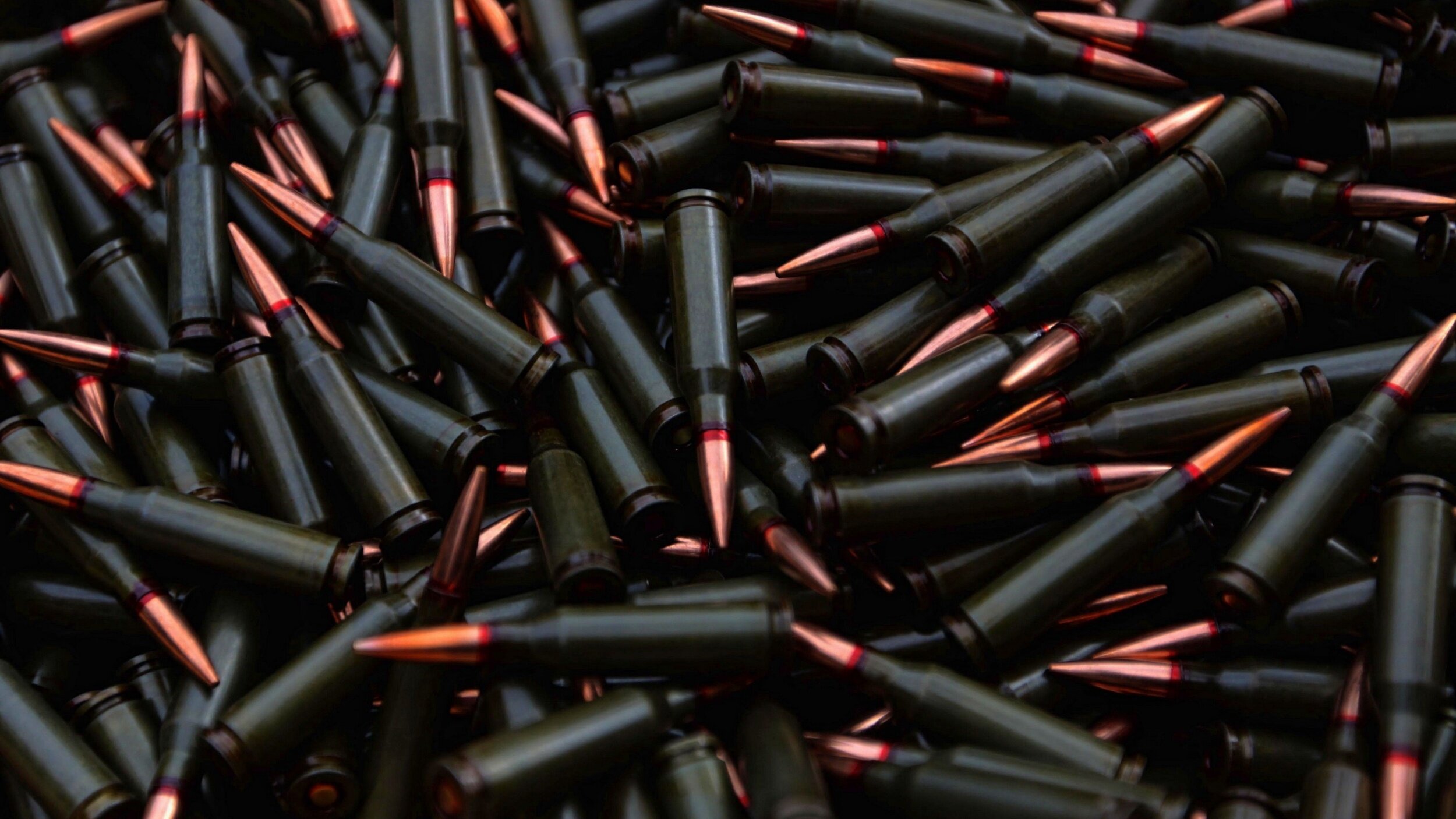
The Armory
“A well regulated Militia, being necessary to the security of a free State, the right of the people to keep and bear Arms, shall not be infringed.”

The Freedom Hub has not been compensated for the following reviews in any way. We keep it honest for you. Always use firearms safely and responsibly.
Glock 17, Gen 5
Original Premier Date 2/26/21
A wise man once said “When you move to Texas, they hand you a Glock at the DMV.” If only such things were true.
The Glock 17 is a full size polymer frame striker-fire 9X19mm handgun. It was originally introduced in 1984, and the competition has been trying to catch-up ever since. This particular model has inspired an extremely loyal fanbase as well as an equal number of haters who won’t even give it a second look. So, I brought my wife with me to the range to see what all the fuss was about.
First impressions? Well, you know how sometimes they have a wooden or “dummy” gun that they use for training purposes? As is with most Glocks, the Glock 17 was an ugly squared-off no frills Scion XB with a trigger. So, what’s the big deal?
While it may be a 5 year old’s crayon depiction of what a gun looks like, there is a lot more going on below the surface. Decades of reliability and accuracy have made it one of the most popular guns amongst military and law enforcement around the globe. The Austrian engineering shows in the simplistic design with a focus on performance.
The signature Glock sights enabled me to achieve a clean sight picture quickly. My wife fired one of the tightest five-shot groupings I’ve ever seen: possibly due the marksman barrel that was introduced with the Gen 5. The magazine release was higher and stuck out a bit more than I was used to and I bumped it during the recoil of my second shot: causing a malfunction. I blame myself and not the gun.
Honestly, it was loud, light, and impressed me immensely. I would trim down the mag release and add some textured grips as it did seem a bit slippy compared to what I’m used to. After all, Glock personalization is a whole subculture that can be found around every corner. -KD
Beretta APX Carry 9mm
Beretta dates back to the late 17th century with the first recorded transaction being 296 Ducats for 185 long barrel rifles. Needless to say, they have been perfecting the art of firearm manufacturing for a while. When presented with an opportunity to try out a Beretta for the first time, I jumped at the chance.
I had only known about the legend of the Beretta M9 going in to this. The M9 is a trusted sidearm for multiple police officers that I know. Finding out that the firearm I was going to be putting to the test was a subcompact 9mm, I knew that I was in for an experience. While not for the same consumer of the M9, the subcompact 9mm has been seen in the hands of certain British secret agents, so… it could still be cool. Right?
The Beretta APX Carry is a striker-fired 9mm subcompact pistol that includes two magazines. One magazine holds 6 rounds and sits flush with the bottom of the frame while the other holds 8 and includes a pinky extension (thank God, but more on that in a minute). Like the SIG P320 from an earlier review, the APX comes with a serialized chassis which opens the door for full personal customization.
Just so you know, I'm 6'3 and my hands are not small by any means. Going from shooting mainly full-sized pistols, it was like I was learning how to shoot for the first time all over again. Adjusting my grip to the small size while trying to ensure that the slide wouldn't catch my hand as it circulated was quite the challenge. Surprisingly enough, the recoil was not too punchy. I was expecting more of a kick from such a smaller and lighter firearm. I can only attest this to the quality craftsmanship that Beretta has been perfecting for centuries.
It was a very well-built firearm, but was not for me. Perfect for ultra-concealed carry with minimum printing and would fit perfectly in a purse, but honestly, it would not be option for somebody of my stature. -KD
Smith & Wesson SD9 VE
"American made." Those words inspire a sense of pride from both manufacturers and consumers alike. For a long time, it seemed as though everything was made overseas. It was cheaper for businesses to source cheap parts, outsource labor, and sometimes move their entire company out of the United States. For Smith & Wesson, though, it was never an option or consideration.
The Smith & Wesson SD9 VE is a full size striker fire pistol that holds sixteen 9mm cartridges in the magazine plus one in the chamber. It features the standard three white dot iron sites and both a stainless steel slide and barrel. It is their entry-level polymer frame 9mm, has a current MSRP at $389, and is still made in America.
The little brother to the M&P line, the SD series of firearms is S&W's entry-level line. Taking it to the range, I was surprised at the recoil management most of all. Very well-balanced and possibly less of a kick than my M&P.
However, in all honesty, the particular SD9 that we were using needed a thorough cleaning and sight alignment. I found myself adjusting to the firearm as opposed to how it should be. Take-down was also difficult as I had trouble lowering the pins and pulling back on the slide simultaneously. This was more than likely due to buildup and it having seen a few sunsets in it's day.
Overall a very solid firearm; which is not surprising coming from S&W. After all, being made in America, it has a pretty high standard to live up to. -KD
Remington 1911 R1
"Standard Issue" is not a term that the US Military uses lightly. In 1918, America was going to war along with her allies for the first time. World War One, or "The Great War" saw the implementation of modern warfare technology and the United States was going to lead on the land, sea, and for the first time in the air. Small arms technology had also come a long way. The six shot revolver was not going to be enough for this kind of engagement. Thankfully in 1911, Colt came out with a .45 caliber 8 shot single-action pistol known as the "1911."
In 1918, the US Government commissioned multiple US small arms manufacturers to develop a 1911 so our boys would all have one as they fought in the trenches of Europe. But why the 1911? Simply because it checked all the boxes: power, reliability, simplicity, and durability. It helped us claim victory in WW1, and would continue to do so for over a century.
Firing the Remington 1911 R1 myself, it became apparent to me very quickly why the 1911 set the standard for so many years. Balance, heft, recoil mitigation, and overall build quality was at the forefront from the time that I wrapped my hands around the grip safety and squeezed my first round out off the chamber. My M&P is a 9mm and has more kick than this .45acp. This checked all the boxes for me as well. In addition to the history, it was also a lot of fun to shoot. I had a great time at the range. Absolutely solid firearm. Standard Issue? Indeed. -KD
Sig Sauer P320
Original Premier Date 3/12/21
Sig Sauer started out as a The Swiss Wagon Factory in Switzerland in 1853. Eleven years later, they entered a rifle making competition and won. Afterwards, with over 30,000 orders for their rifle from the Swiss Army, they changed their name to the Swiss Industrial Company (Schweizerische Industrie-Gesellschaft or SIG for short). In 1985 with their eye on the growing American market, they moved their headquarters to Virginia as SIGARMS and later moved to their present location in New Hampshire. In 2007, they officially changed their name again to SIG SAUER. Go ahead and read that again while I take another sip of my whiskey. A wagon company? Really?
The SIG P320 is the newest edition in a long line of handguns developed with the specific purpose of being used as standard issue for military and police across the globe.
I was very excited to try this one out as it is the direct competition to the Glock 19 and my personal M&P M2.0. While it is a full size 9mm strikerfire pistol, the firing mechanism is a separate unit from the frame which made the trigger very responsive and quick to reset. I also noticed it sat a bit higher in my grip which I didn't mind at all, but I could see how that would be a problem for somebody with smaller hands. They do make the compact P320X to solve this issue.
What I experienced was a no-frills solid firearm that doesn't try to pretend it's something that is not. Easily customizable due to the separate firing mechanism and trusted by police and military across the globe, this is truly a reflection of years of reliability. While SIG was born in Europe, it was truly perfected in America. -KD
Smith & Wesson M&P M2.0 9mm
The Smith & Wesson M&P M9 M2.0 is a quality, polymer body, striker-fired handgun. Coming from the same company that pioneered the Volcanic Pistol (the first pistol capable of firing a self-contained cartridge) and the .357 revolver, Smith & Wesson developed the M&P line in 2005 with firearms tailored to the Military and Police that it was named for.
The M2.0 line came out in 2017 and offers compact, subcompact, and full size options available in 9mm, .40, and .45 calibers. It is also available in optics-ready, Performance Center, and specific state-compliant versions.
I personally chose the full size 9mm version for home defense. I also went with the "no thumb safety" option for the same reason. After 1000 rounds, I haven't experienced a single malfunction or misfire at the range. The durability and dependability that it was made for has served me well as my first handgun.
In the box you will find two seventeen round magazines, a slide lock, trigger lock, and 4 included palmswell grips so it can adapt to your specific hand size and grip preference. I highly recommend it for any veteran marksman or first-time shooter. -KD






